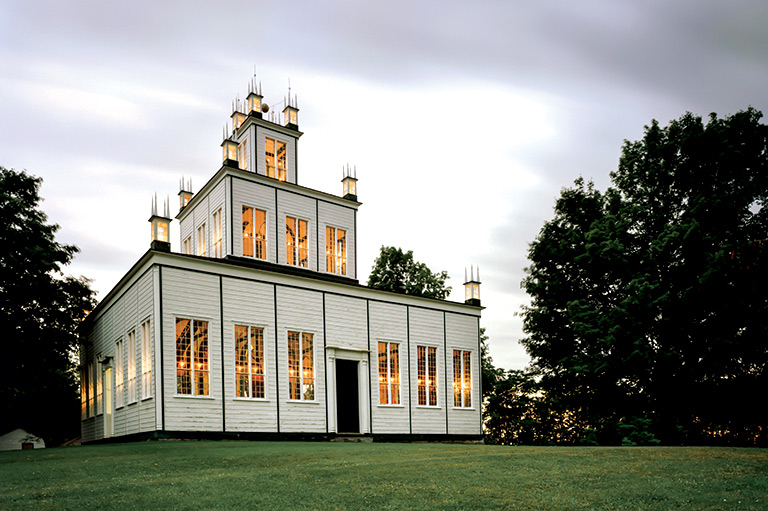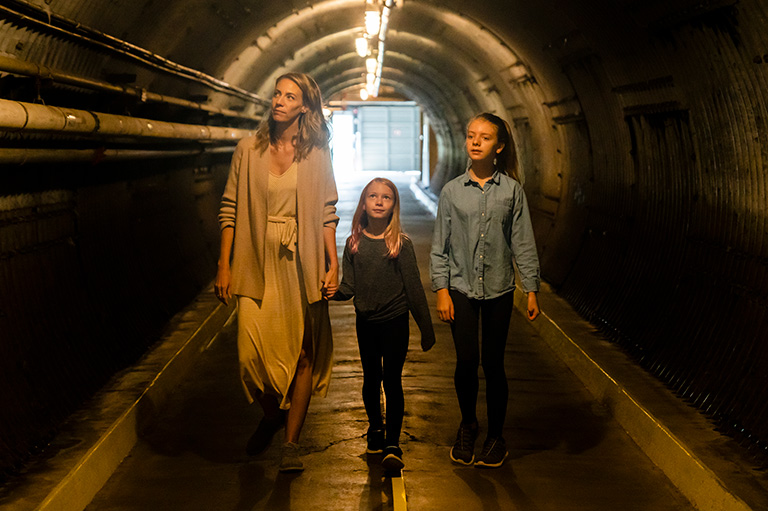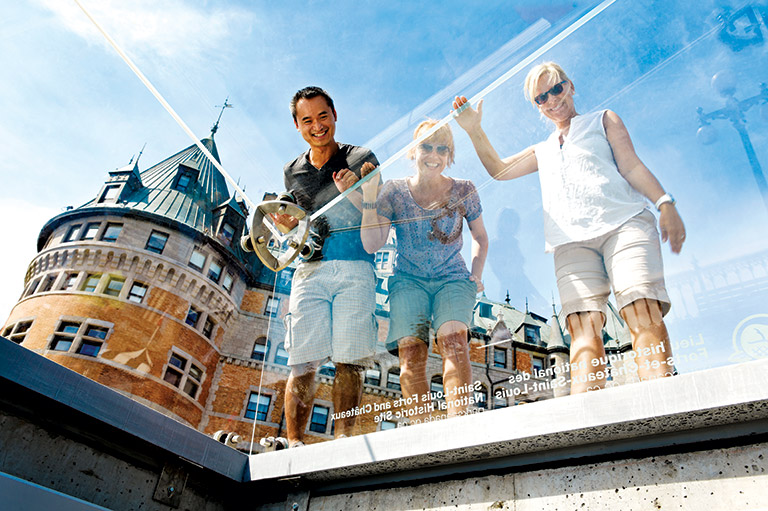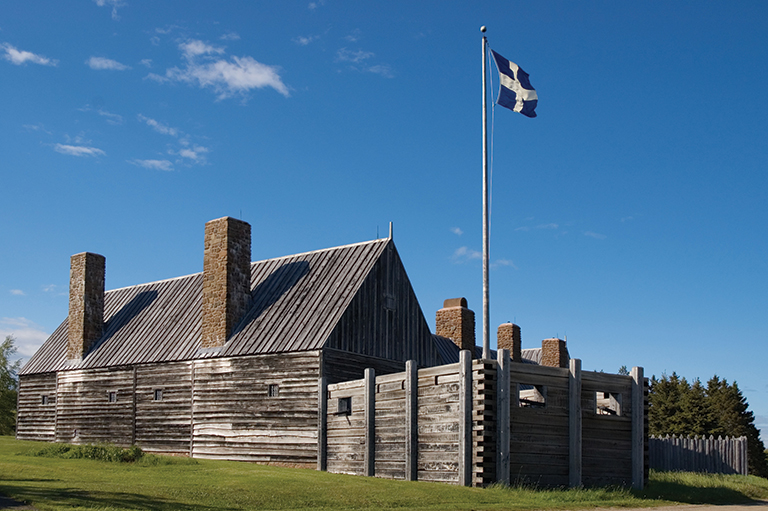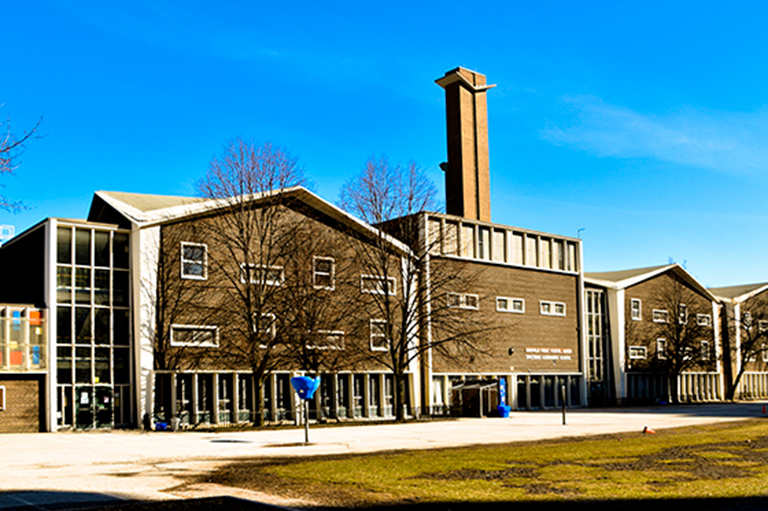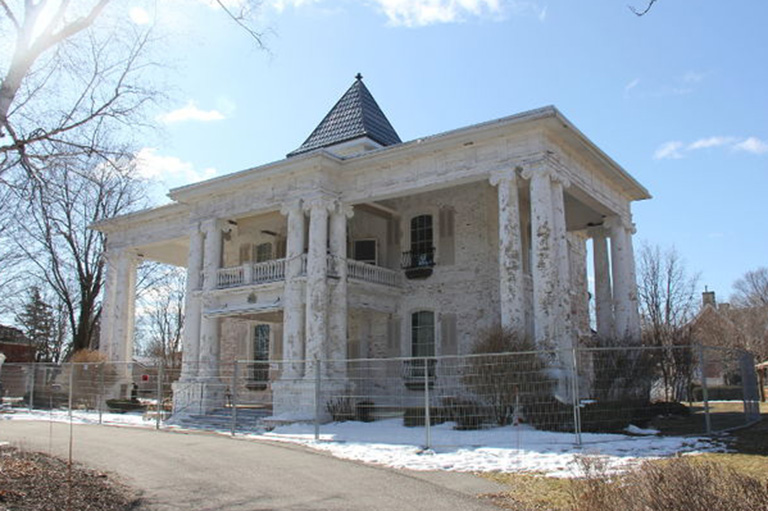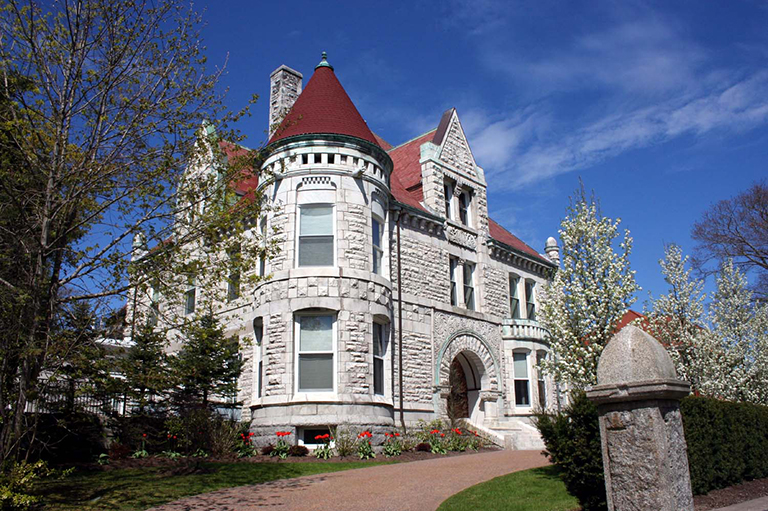Art and Faith in a Spectacular Setting
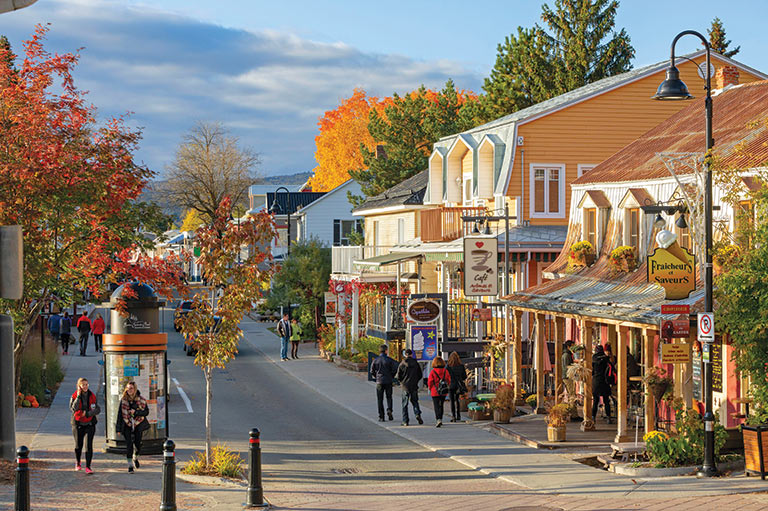
As the little train slowed for the final curve into Baie-Saint-Paul, Quebec, I felt a stab of worry. Unusually for me, I had done little research beyond satisfying myself that it was a pretty, walkable town with lots of cafés. Now that the gloriously shapeless days I’d been looking forward to had arrived, I realized that I was mostly going on faith that I would actually find things to do.
That faith was well placed. I spent the next four days soaking up history, art, and the incomparable landscape of the town in the Charlevoix region along the St. Lawrence River northeast of Quebec City — all without once stepping into a cultural institution. I love museums and galleries as much as anyone, but the term “busman’s holiday” comes to mind for a history editor on vacation.
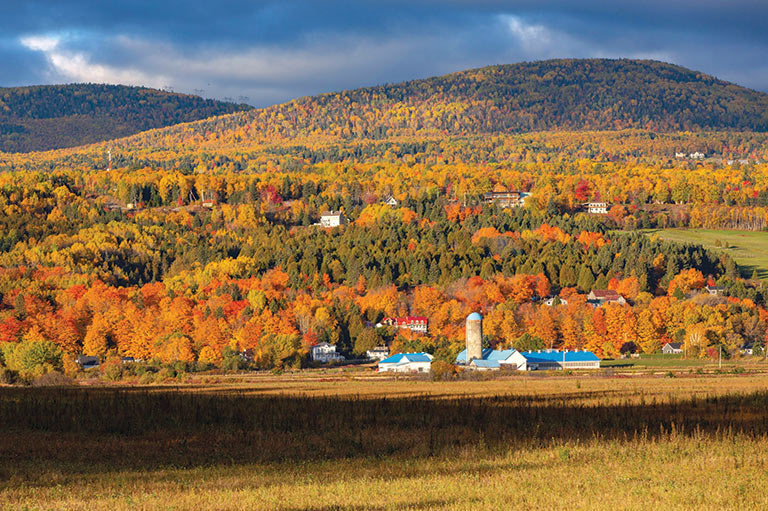
I knew I’d made a good call within minutes of hoisting my bag and setting off to find my bed and breakfast. Barely one hundred metres into my walk, I stopped to read a plaque showing a painting of a 1919-era house that still stands across the street.
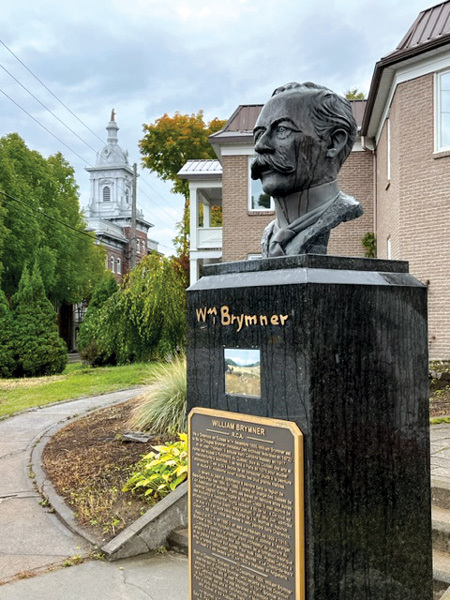
The next clue was a bust of artist William Brymner, complete with a reproduction of his famous 1885 painting Four Girls in a Meadow, Baie-Saint-Paul and a bilingual biographical plaque. Baie-Saint-Paul’s beauty, both natural and architectural, has attracted artists for more than a century. From Clarence Gagnon to A.Y. Jackson, Jean-Paul Lemieux, and local sisters Blanche and Yvonne Bolduc, the area has inspired so many painters that the landscape will no doubt feel familiar to some visitors.
Perhaps more than any other town in Canada, Baie-Saint-Paul understands the appeal of its artistic side for tourists interested in hanging out where so many painters have found inspiration. Maps guide visitors to interesting buildings and artists’ homes; plaques and busts offer historic context about the community’s outsized cultural role; and art itself abounds wherever you turn. Had I not stricken cultural institutions from my laid-back itinerary, I definitely would have visited the highly regarded Musée d’art contemporain de Baie-Saint-Paul and the Carrefour culturel Paul-Médéric, along with some of the numerous private art galleries.
I was expecting to enjoy exploring Baie-Saint-Paul’s well-known artistic heritage. What I wasn’t prepared for was the quiet power of its long religious history, which continues to enrich the community. (Interestingly, the striking church that rises above the heart of the town is, at barely sixty years old, a bit of a side note to the story I discovered.)
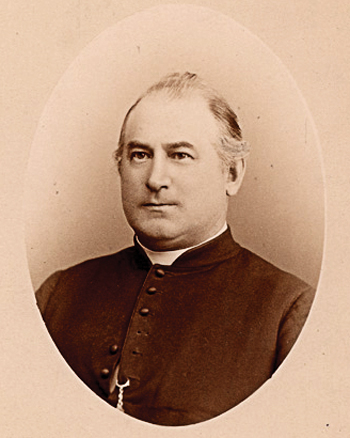
The first four nuns of the Petites Franciscaines de Marie arrived in Baie-Saint- Paul in 1891 to run a hospice founded by Father Ambroise-Martial Fafard (after whom one of the town’s main thoroughfares is named). The facility provided a home for people with disabilities and long-term illnesses, as well as for poor seniors and orphans, while the order oversaw an enormous estate running from the town centre down to the St. Lawrence River. The property encompassed barns, pastures, and vegetable gardens, as well as a hospital.
As the Petites Franciscaines’ numbers gradually dwindled, the nuns decided to ensure that their buildings and property would carry their values of compassion and community into the future. A non-profit organization now runs the former mother house complex, which is home to, among other things, a hostel, a museum, a co-working space, art studios, community groups, a bakery, and a co-operative café.
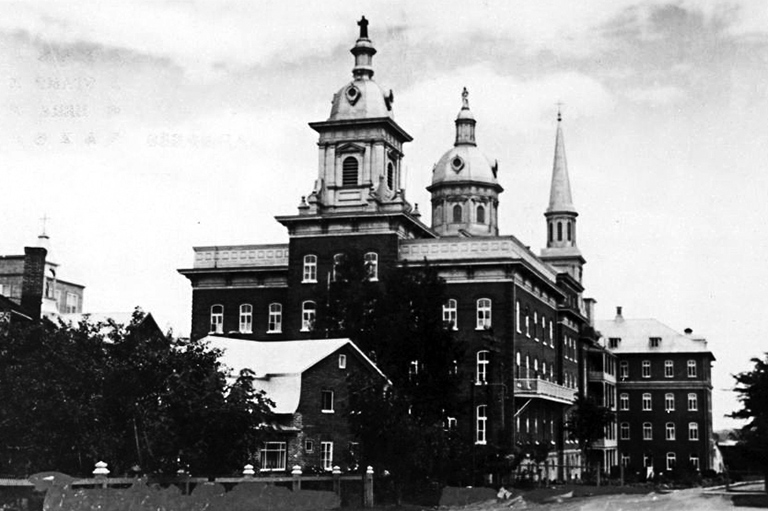
As much as I appreciated learning about the nuns’ story from panels around the red brick buildings that once sheltered the sick and the poor, the surrounding property was what really captured my heart. I ambled down the beautiful tree-lined “chemin des Soeurs” behind the main buildings, lost in the joy of peaceful discovery. Before long, I arrived at the large parish cemetery, with the nuns’ final resting places prominently marked — albeit not as prominently as those of the priests.
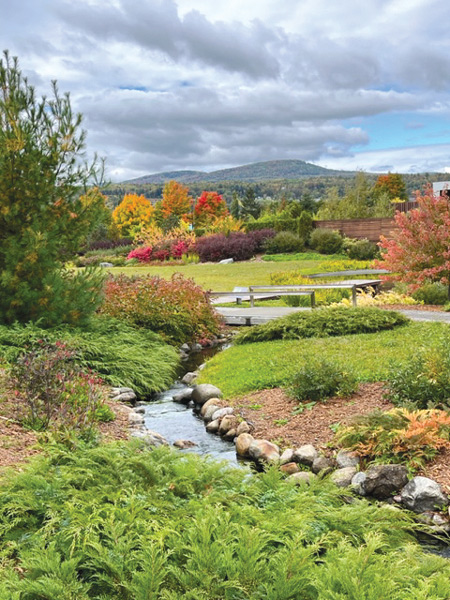
Another day, I retraced the chemin des Soeurs and continued along the connecting walking trails to the vast river. I sat on a bench at the end of the long wharf, reading and watching shorebirds follow the outgoing tide in search of snacks, before I explored the park’s beach and wooded trails.
There was one more gift of the Petites Franciscaines left to discover. When I entered the gates of the Jardin de François — named for Saint Francis of Assisi, a legendary lover of nature — I immediately, if unintentionally, headed the wrong way, beginning in a stark, hedged area covered in pebbles and intended to prompt contemplation of one’s mortality at the end of the walk. It turns out that it was also a serene way to start. While listening to the trickle of a little stream, I continued around the gently winding paths through gardens, which were stunning even well after summer’s height. “I’m just so happy right now,” I marvelled.
On my final morning, I returned to the river for a magnificent sunrise and then went back to the Jardin de François — traversing the sanctuary-like property in the intended order this time — to breathe in its peace and beauty once more. As I waited for the train back to Quebec City, I gave thanks for the generosity and vision of the nuns who turned their property into a gift for visitors and residents alike. And while the train chugged away I knew that, as had happened for the artists of the past, Baie-Saint-Paul was now printed on my soul.
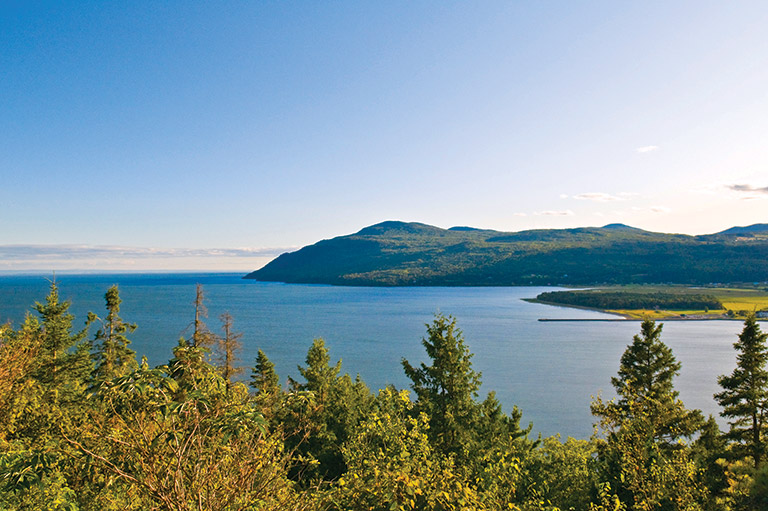
IF YOU GO
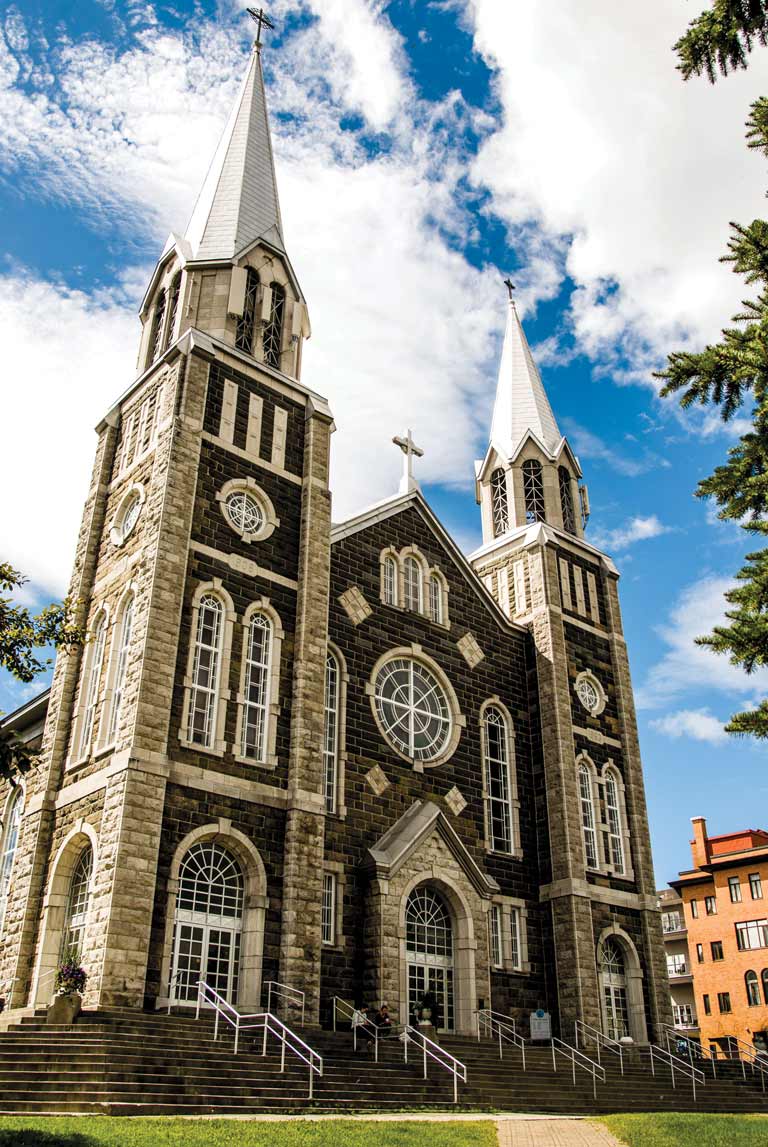
GETTING THERE: The little Charlevoix tourist train that leaves from Montmorency Falls, at the east side of Quebec City, is a relaxing if rather no-frills option. The service and its website are geared more to day trippers than to people staying longer, so planning takes a while and may involve a longish taxi trip from central Quebec City to the falls.
EAT AND DRINK: Baie-Saint-Paul boasts a disproportionate number of excellent restaurants, many featuring local products like the beloved Le Migneron de Charlevoix cheese. Enjoy tea and a macaron at Catherine Méra Patisserie or a leisurely cappuccino at the Mousse Café.
EXPLORE: The Parcourir Charlevoix app provides a variety of themed self-guided tours. It’s worth taking at least one day to explore the region’s dramatic geography that was shaped by the impact of an Ordovician-era meteorite. The drive along the St. Lawrence River offers gorgeous views at every turn — a highlight is the dramatic art installations at Domaine Forget de Charlevoix, overlooking the river at nearby Saint-Irénée.
We hope you’ll help us continue to share fascinating stories about Canada’s past by making a donation to Canada’s History Society today.
We highlight our nation’s diverse past by telling stories that illuminate the people, places, and events that unite us as Canadians, and by making those stories accessible to everyone through our free online content.
We are a registered charity that depends on contributions from readers like you to share inspiring and informative stories with students and citizens of all ages — award-winning stories written by Canada’s top historians, authors, journalists, and history enthusiasts.
Any amount helps, or better yet, start a monthly donation today. Your support makes all the difference. Thank you!
Themes associated with this article
Advertisement
With 7 uniquely curated newsletters to choose from, we have something for everyone.

